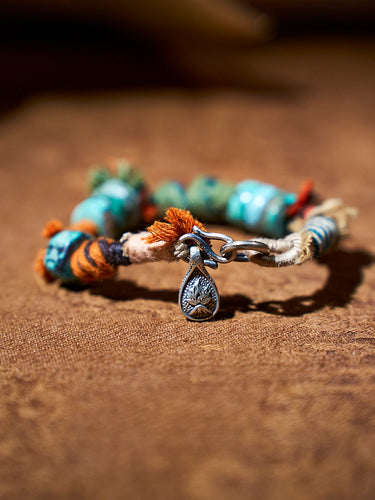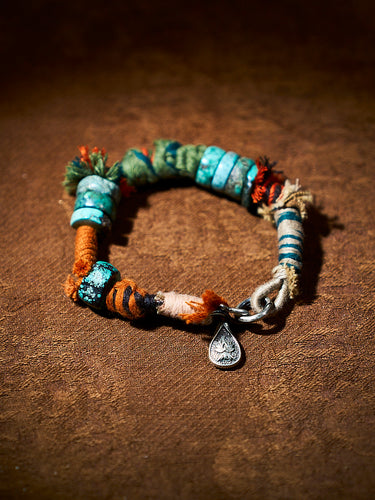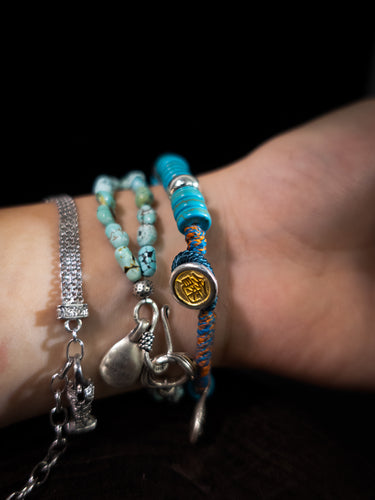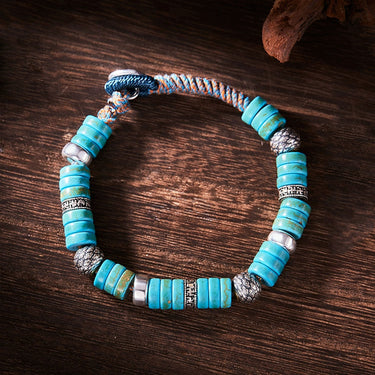
Chinese ear cups, with their distinctive design and cultural resonance, are an essential element of traditional Chinese tea ceremonies, embodying the refined elegance and deep-rooted tea culture of China. In the world of classical Oriental art, there exists a captivating craft that embodies the essence of Chinese tradition and elevates the experience of tea drinking—the art of Chinese ear cups. These intricately designed cups hold deep cultural significance and play an essential role in traditional tea ceremonies. Join us on a journey as we delve into the history, symbolism, and craftsmanship of Chinese ear cups, exploring why they are indispensable to the art of tea.
The Tea History of Chinese Ear Cups
In China, tea is more than a beverage; it is a medium through which history, art, philosophy, and etiquette converge. The traditional Chinese tea ceremony, known as ‘Gongfu Cha’, is a meticulous and artful process that emphasizes the careful preparation and presentation of tea. In this ritual, every element, including the ear cups, plays a vital role. The cups are specifically designed to enhance the sensory experience of tea drinking, allowing one to fully appreciate the color, aroma, and flavor of the tea.Chinese ear cups have a rich history that dates back centuries. Rooted in the ancient traditions of Chinese tea culture, these cups have been cherished by tea enthusiasts and collectors alike. The art of crafting ear cups has been passed down through generations, with artisans honing their skills to create exquisite vessels that embody the spirit of Chinese aesthetics. In a traditional Chinese tea ceremony, the manner in which tea is served and consumed is ritualistic, intended to create a harmonious atmosphere. The use of ear cups in this ritual is a nod to tradition and a commitment to the ceremonial process. The act of holding the cup, savoring the tea, and engaging in conversation or contemplation is elevated into an art form, a moment of connection between the individual, the tea, and the history and culture it represents. While deeply rooted in tradition, Chinese ear cups continue to find relevance in modern times. They are appreciated not only by tea enthusiasts and collectors but also by those who seek a connection to the cultural heritage of China. Contemporary artisans and designers are also reinterpreting ear cups, blending traditional craftsmanship with modern aesthetics, ensuring that this quintessential element of Chinese tea culture continues to thrive.
Symbolism and Meaning of Chinese Ear Cups
Chinese ear cups are not just functional vessels; they are imbued with profound symbolism. Each element of their design carries a deeper meaning, adding layers of significance to the tea-drinking experience.
The shape of ear cups is often round, symbolizing unity and harmony. This reflects the Chinese belief in the interconnectedness of all things and the pursuit of balance in life. The handle, typically in the form of a small loop, represents the cycle of life and the continuous flow of energy. The creation of Chinese ear cups requires meticulous craftsmanship and a deep understanding of ceramic or porcelain art. Artisans carefully select the finest materials known for their durability and ability to retain heat, ensuring that the tea remains at the perfect temperature. The shaping of ear cups demands precision and skill. Artisans use pottery techniques to mold the clay, creating delicate curves and proportions that define the cups. Each cup is a unique masterpiece, showcasing the artisan's mastery of form and function. The decorative elements on ear cups are a testament to the artistry of Chinese craftsmanship. Intricate patterns, motifs, and symbols are meticulously painted onto the surface of the cups, often drawing inspiration from nature, mythology, or auspicious symbols. These intricate designs enhance the cultural significance of the cups, making them not just vessels for tea but works of art in their own right.
The Role of Ear Cups in Traditional Tea Ceremonies
Tea ceremonies hold a special place in Chinese culture, representing a harmonious union of philosophy, aesthetics, and social customs. Chinese ear cups are essential components of these ceremonies, playing a pivotal role in the ritual of serving and enjoying tea. During a traditional tea ceremony, the host carefully selects and prepares the tea, paying attention to every detail. The tea is poured into the ear cups with grace and precision, symbolizing respect and hospitality. The cups are then passed among the participants, fostering a sense of connection and shared experience. As the participants hold the ear cups, they appreciate not only the tea's aroma and flavor but also the beauty of the cups themselves. The intricate designs and symbolic motifs on the cups elevate the sensory experience, creating a multisensory journey of taste, smell, touch, and sight. Chinese ear cups continue to captivate collectors, artists, and enthusiasts who appreciate the timeless beauty and cultural significance of classical Oriental art. These cups serve as gateways to the rich heritage and profound wisdom of Chinese tradition, allowing us to connect with the past while embracing the present. In recent years, there has been a resurgence of interest in traditional Chinese art and culture worldwide. Collectors eagerly seek out rare and exquisite ear cups to add to their collections, while artists draw inspiration from their designs and craftsmanship. Exhibitions and museums dedicated to Chinese art proudly showcase ear cups, introducing their cultural legacy to a global audience.
In conclusion, Chinese ear cups are much more than mere components of tea-drinking; they are carriers of history, symbols of culture, and objects of beauty. Essential for traditional tea ceremonies, they encapsulate the spirit of Chinese tea culture, representing a blend of artistry, ritual, and the profound philosophical ethos that tea embodies in Chinese society. Chinese ear cups are not mere vessels for tea; they are embodiments of Chinese philosophy, aesthetics, and cultural heritage. Their symbolism, craftsmanship, and role in traditional tea ceremonies make them essential elements of Chinese tea culture. As we appreciate the artistry and cultural significance of Chinese ear cups, we embark on a journey of sensory delight, connecting with the spirit of Chinese tradition and the timeless beauty of classical Oriental art.





























